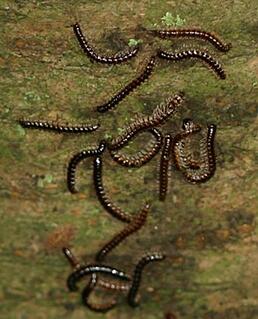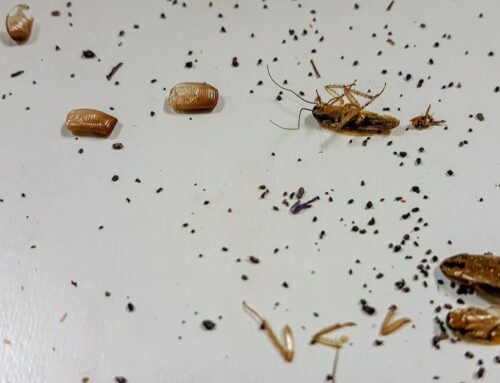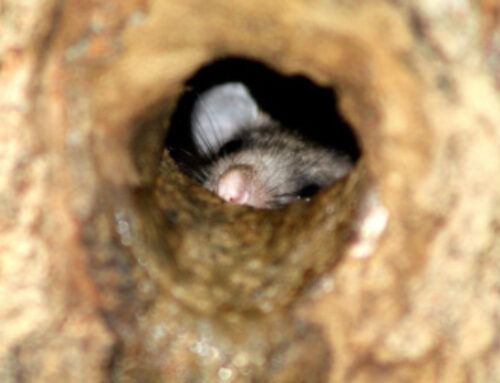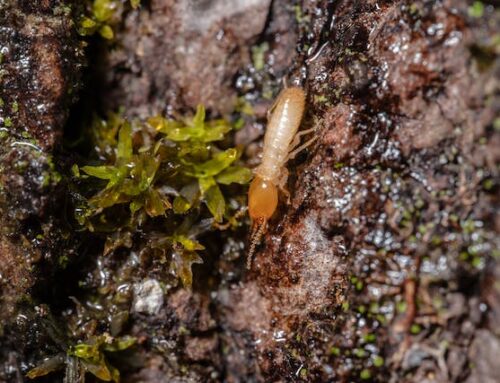Millipedes are typically harmless outdoor creatures, but when environmental conditions change, they can find their way into homes in alarming numbers. These multi-legged arthropods thrive in damp, shaded environments, often hiding under mulch, stones, or leaf litter. However, heavy rain, drought, or temperature shifts can drive them indoors in search of shelter and moisture. While millipedes do not bite or transmit disease, they can become a significant nuisance once they enter living spaces.
Understanding how to identify millipede activity and respond appropriately is essential for maintaining a clean and comfortable home. With proper millipede control and preventive pest management, homeowners can minimize infestations and protect indoor environments from these unwelcome invaders.

Recognizing Millipede Activity Indoors
Millipedes are often mistaken for centipedes, but their physical differences are easy to distinguish upon close observation. Millipedes have long, cylindrical bodies with two pairs of legs per body segment and move slowly in a wave-like motion. Centipedes, on the other hand, are flatter, faster, and have only one pair of legs per segment.
Millipedes typically enter homes during periods of high moisture or when their outdoor habitats become inhospitable. Once inside, they are commonly found in:
- Basements and crawl spaces: These areas retain moisture, providing ideal conditions for millipedes to survive.
- Bathrooms and laundry rooms: Water leaks or humid air attract these pests.
- Garages and entryways: Gaps under doors or around windows serve as common entry points.
- Under carpets or boxes: Millipedes hide in dark and undisturbed locations.
Their presence often becomes most noticeable after rainfall or in the fall when temperatures drop. While they do not cause structural damage, millipedes can release a foul-smelling fluid when disturbed, which can stain surfaces and irritate sensitive skin.
Common Causes Of Indoor Infestations
Understanding why millipedes invade homes helps in creating long-term solutions. Unlike other pests, millipedes do not thrive in dry indoor environments. Their sudden appearance usually points to favorable conditions nearby that need to be corrected.
Common reasons for millipede infestations include:
- Excessive moisture: Overwatering lawns, leaking pipes, or poor drainage encourage millipedes to migrate indoors.
- Thick mulch or vegetation near the foundation: Dense organic matter provides food and shelter.
- Cracks in foundations and siding: Even small gaps allow millipedes to slip through.
- Cluttered basements: Cardboard boxes and fabric piles offer concealment and moisture retention.
- Weather changes: Sudden humidity shifts or heavy rainfall can displace outdoor populations.
Addressing these conditions reduces the likelihood of infestation. Maintaining proper drainage, sealing cracks, and keeping landscaping neat all contribute to long-term prevention. However, when infestations become recurrent or widespread, professional pest control is often the most reliable solution.
Steps For Effective Millipede Control
Controlling millipede populations requires addressing both the environmental factors that attract them and the entry points that allow them inside. Simply removing visible millipedes is not enough to prevent reinfestation. The following strategies are essential to maintain a millipede-free home:
- Reduce moisture sources: Repair leaks, ensure proper ventilation, and use dehumidifiers in basements and bathrooms.
- Seal entry points: Use caulk or weatherstripping to close cracks around windows, doors, and foundation joints.
- Clean regularly: Vacuum floors and baseboards where millipedes may hide or lay eggs.
Outdoor maintenance is equally important. Millipedes thrive under layers of decaying matter, so keeping the perimeter of your property clear helps limit their numbers. It also helps to install proper drainage systems to keep the soil dry. For ongoing protection, consistent inspection and maintenance through regular pest inspections ensure that millipede populations are kept in check before they become problematic.
Why Professional Treatment Is Worth It
While small infestations can sometimes be managed through environmental adjustments, professional pest control remains the most effective long-term solution. Specialists use targeted treatments that not only eliminate existing millipedes but also address the underlying causes of infestation.
Professional technicians conduct comprehensive inspections to identify breeding areas, moisture issues, and structural vulnerabilities. They apply precise barrier treatments around entry points, foundations, and crawl spaces, ensuring millipedes cannot reenter once expelled. Additionally, pest control professionals use safe and environmentally friendly formulations designed to last longer than store-bought solutions.
Unlike one-time DIY fixes, professional services include ongoing monitoring and seasonal adjustments to account for weather changes that affect pest activity. This proactive approach, similar to the principles behind quarterly pest control plans, ensures year-round protection. By addressing both the symptoms and sources of infestations, professionals provide peace of mind and lasting results.
Long-Term Prevention Tips To Keep Millipedes Out
Once millipedes have been removed, maintaining preventive measures is key to ensuring they do not return. Long-term pest management combines structural maintenance, environmental control, and regular monitoring.
Practical long-term prevention steps include:
- Inspecting foundations regularly: Identify new cracks or gaps before they widen.
- Improving ventilation: Install exhaust fans in bathrooms and kitchens to reduce humidity.
- Adjusting irrigation schedules: Avoid excessive watering around the property’s perimeter.
- Storing firewood and mulch away from walls: These materials attract moisture and shelter millipedes.
- Cleaning gutters and drains: Blocked drainage creates damp conditions ideal for pest breeding.
Consistency is vital. Preventive maintenance should become part of your home’s seasonal routine. Millipedes tend to resurface during specific times of the year, especially in late summer and fall, so preparation ahead of these months can prevent future problems.
If the same infestation returns despite these efforts, it’s a sign that a more comprehensive solution is needed. Professional pest management specialists can design custom plans that protect your home based on its layout, moisture conditions, and local pest trends.
Keep Your Home Free From Crawling Invaders
Millipedes may not cause direct harm, but their presence indoors signals environmental issues that need to be addressed quickly. Recognizing their activity, managing moisture, and applying effective treatments ensure long-term protection and comfort.
For thorough inspection, expert guidance, and reliable millipede control solutions, contact E&G Exterminators. Our team provides professional pest control programs that target infestations at the source and prevent them from returning.






